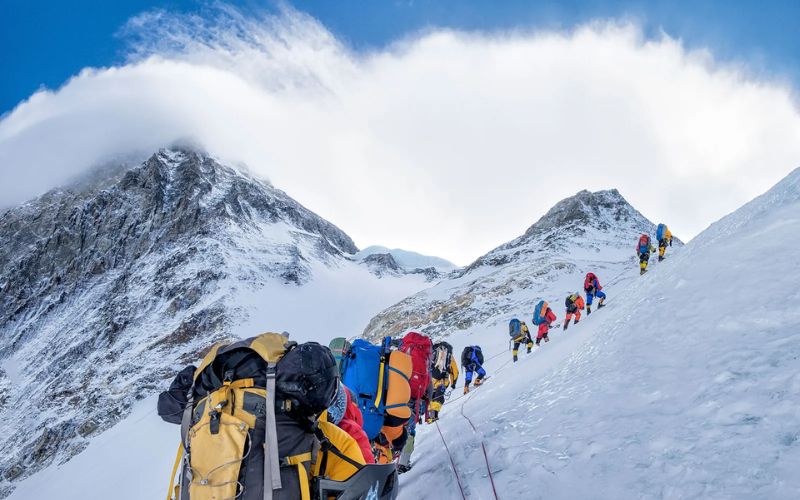
In a recent report, the Tibet Mountaineering Association has announced the granting of climbing permission for foreigners eager to conquer the formidable peaks of Mount Everest and Shishapangma in Tibet. While this decision opens up exciting opportunities for adventurous climbers, it also raises significant environmental concerns and highlights the potential for further pollution in these ecologically sensitive regions.
Mount Everest, often referred to as the "Turquoise Goddess," is a majestic mountain situated on the border between Tibet and Nepal. At an elevation of 8188 meters (26,864 feet) above sea level, it ranks as the world's sixth-highest peak. Known for its stunning beauty and challenging ascent routes, Cho Oyu has historically been a coveted destination for mountaineers seeking to test their mettle.
Shishapangma, the 14th highest mountain globally, is another jewel in Tibet's Himalayan crown. Rising to an imposing altitude of 8027 meters (26,335 feet), this mountain has attracted adventurers from around the world to Tibet's remote wilderness.
While the opening of Mount Everest and Shishapangma to foreign climbers presents exciting opportunities for mountaineers, it also raises concerns about the environmental impact of increased human activity in these pristine areas.
Allowing foreigners to climb these high-altitude peaks will undoubtedly lead to increased human activity in these remote regions. Just as in the case of Mount Everest, this heightened presence can result in a surge in waste generation, including plastic, food packaging, and discarded climbing equipment.
As the climbing season ended at the end of May, the Tibet Mountaineering Association, which administers all climbing activities on the north side, is still busy sorting the accumulation of garbage over the past few months, according to recent report.
The Himalayan region is known for its fragile ecosystems and unique biodiversity. The influx of climbers and trekkers can lead to disturbances in these ecosystems, affecting flora and fauna. Additionally, improper waste disposal can harm local wildlife and vegetation. The Himalayas hold cultural and historical significance for indigenous communities. Increased tourism and mountaineering can disrupt these communities and their traditional way of life.
The mountains are a source of freshwater for local communities and downstream regions. Pollution from human waste and other contaminants, as seen on Mount Everest, can contaminate water sources, posing health risks for both climbers and local populations.
Mountaineering activities contribute to climate change due to the use of fossil fuels, particularly in the form of helicopters and other transportation methods. This can exacerbate the melting of glaciers in the region, further affecting the environment.
Edited and collated by Team TRC